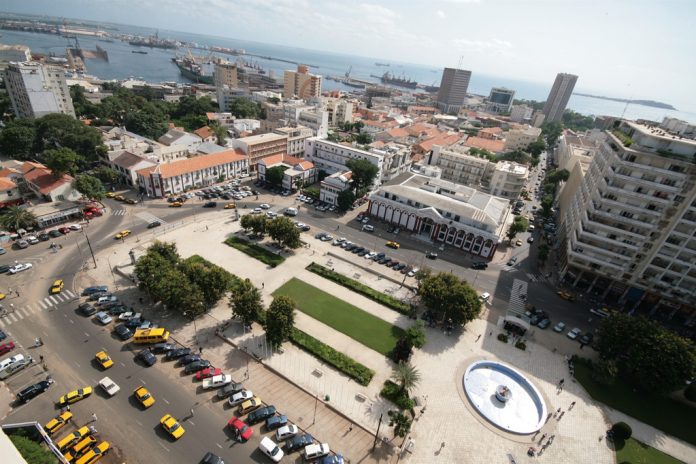Senegal’s annual economic chart, along with provisional figures for 2020, confirms how much services drive Senegal’s growth. The finance sector, in particular, supported lower-than-expected activity in 2019.
The Senegalese Agency for Statistics and Demography (ANSD) has adjusted its estimates of the country’s activity for 2019. According to quasi – final data, growth stands at 4.4% in 2019, after a 6.2% increase (final figures) in 2018.
Admittedly, the year 2019 already seems far away, given the current situation, but it testifies to the growth potential of Senegal excluding “shock”, such as that suffered in 2020. The Senegalese press has not failed to point out that this revision contrasts with the government’s stated claim of continuous growth of at least 6% per year for six consecutive years.
“This slowdown took place against a backdrop of a 1.9% increase in the general price level, after a 0.8% depreciation in 2018,” explains ANSD.
The year 2019 was marked by a slowdown in global economic activity but the maintenance of dynamic activity in the Uemoa zone (+ 5.8%), in a context of price control. “This price contraction is related to the good agricultural season carried out in several Member States and the measures taken by governments to improve the supply of food products to markets.”
In volume terms, final consumption and investment (GFCF) recorded, respectively, increases of 3.7% and 8.4% in 2019 against 4.5% and 13.7% in 2018. Exports increased more faster (+ 11.2%) than imports (+ 5.3%), as a result the foreign trade balance improved in 2019. Note the unabashed dynamism of household savings (+17.7 %) in 2019, after 16.8% in 2018.
Coming back to the slowdown in growth, “this situation is due to the slowdown in growth in the primary (+ 4.5%), secondary (+ 3.7%) and tertiary (+ 4.6%) sectors”, explains ANSD. The tertiary sector contributes 2.3 points to growth, against 0.7 point for primary and 0.9 point for secondary. “The tertiary sector thus remains the engine of economic growth given its preponderant weight and its dynamism,” underlines ANSD.
The good performance of the tertiary sector is attributable to the performance of financial and insurance activities (+ 12.0%), transport, real estate activities and education. “The strengthening of financial services is driven by the good performance of the banking and insurance sub-sectors which improved by 8.3% and 23.1% between 2018 and 2019 and a dynamism of the activities of financial auxiliaries and insurance.”
In terms of jobs, final consumption (82.3% of GDP) increased by 3.7% (-0.8 point). This downward trend was mitigated by public consumption, which rose 5.5% in 2019.
Diagram which is found for the GFCF: private investment increased “only” by 9.3% (against + 19.5% in 2018) while public investment rebounded by 5.0% in 2019, after a decline of 3.1% in 2018. This increase comes in the context of the pursuit of structuring projects, in particular the finalization of the extension of the North Clearance Lane and the works relating to the Regional Express Train.
Regarding foreign trade in goods and services, they are characterized by the strength of exports in value (+ 12.7%) and a slowdown in the growth of imports (+ 5.5%). This made it possible to contain the trade deficit at 1,940.5 billion CFA francs against 2,040.5 billion in 2018.
Senegal posted, at the end of 2019, a national disposable income of 14,505 billion F.CFA (+ 6.3%), or a per capita income of 895,000 F.CFA, or 1,528 dollars.
Rebound in the third quarter of 2020!
Compared to the second quarter, Senegal’s real GDP increased 3.8%, ANSD reveals. Which specifies that this result is explained by an increase in activity in the primary (+ 2.0%), secondary (+ 6%) and tertiary (+ 3.3%) sectors.
Final consumption rose by 1.9% and GFCF by 2.7%. Exports rebounded 35.2% in real terms. Compared to the third quarter of 2019, economic activity shows more modest growth (0.7%) because over one year, the tertiary sector still shows a contraction of 0.7%.
Reference: https://www.worldbank.org/en/country/senegal/overview































